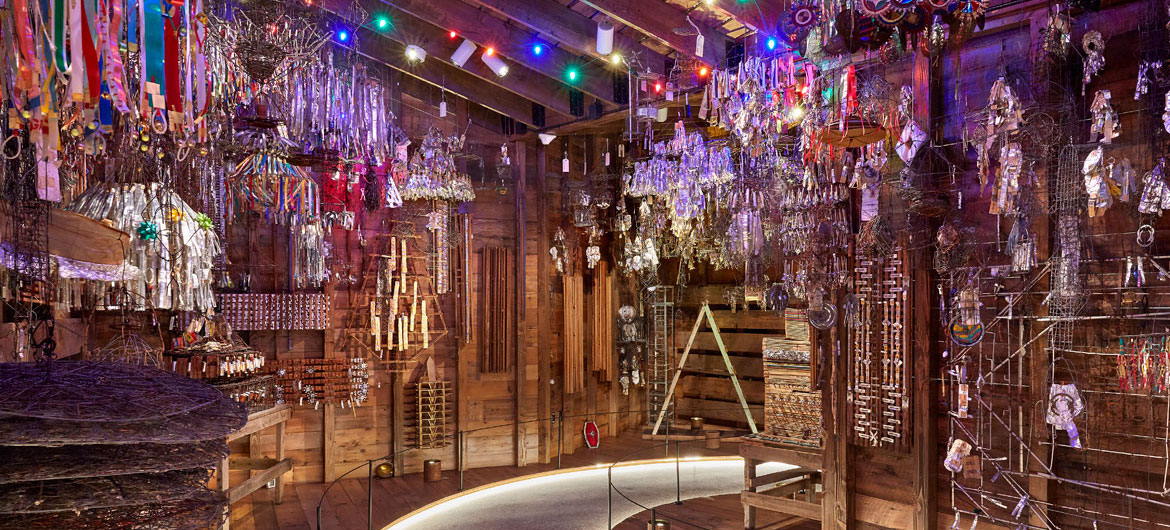Ruth Kohler first heard about the home of Eugene Von Bruenchenhein and his wife Marie in January 1983. Eugene had recently died and a friend, a retired police officer, brought samples of Eugene’s art to the Milwaukee Art Museum hoping to sell the pieces to help support Marie financially now that she was on her own.
Milwaukee museum staff passed on Von Bruenchenhein’s art, but mentioned it to Kohler, the director of the Kohler Arts Center in Sheboygan, Wisconsin, who happened to be serving as an art juror for the Milwaukee museum. They took her to see the man’s home in nearby West Allis, Wisconsin.
”It was probably the most moving thing that ever happened to me,’’ Kohler told The New York Times in 2009, “entering his little cottage surrounded by these concrete, high-relief heads that stood like sentinels around this clapboard house.”
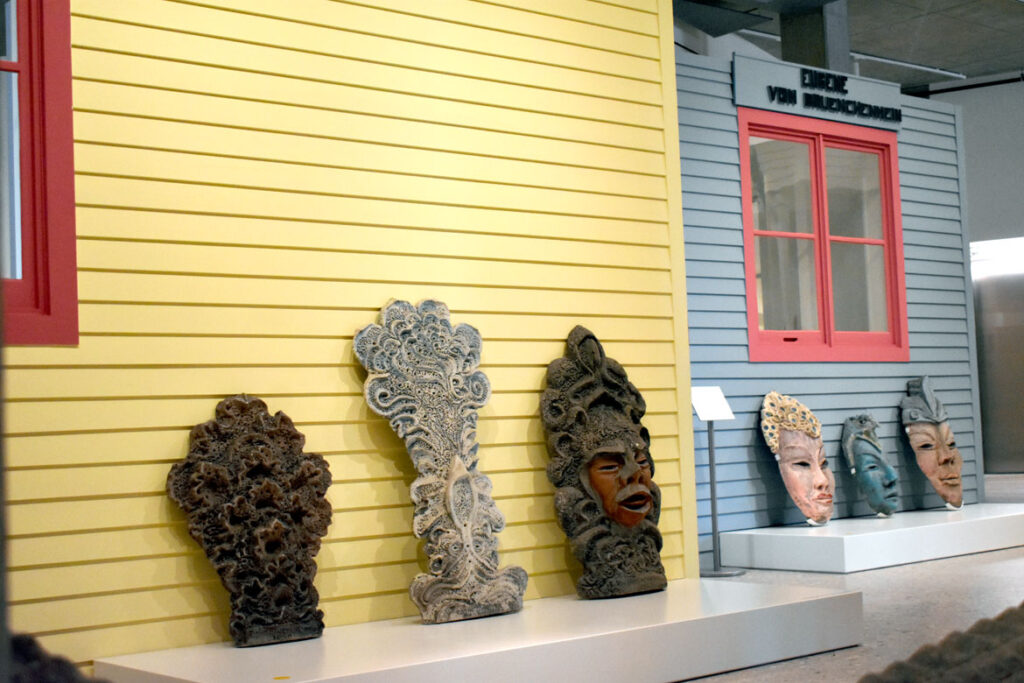
Von Bruenchenhein had worked in a flower shop and then a bakery. The couple’s small house was painted in a patchwork of bright turquoise, yellow, pink, blue, green and red. Lines and dots loosely spraypainted across the door resembled flowers. Kentucky Fried Chicken boxes filled with chicken bones were stacked in the foyer. Suspended from the ceiling moulding were miniature thrones that Von Bruenchenhein had assembled from the bones. He had also constructed chicken bone towers that rose 5 feet high. Piled on tables were pin-up photographs he had staged of Marie. Paintings leaned against walls—visions of nuclear apocalypse, rocket ships, visionary cities. A gold-hued aluminum plaque hung above the kitchen door, inscribed with the message: “Eugene Von Bruenchenhein / Freelance Artist — / Poet and Sculptor — / Innovator — / Arrow maker and Plant man — / Bone artifacts constructor — / Photographer and Architect — / Philosopher.”
”It was just incredible,” Kohler told The New York Times in 2009. ”And it hit me that we had to do something to preserve it. I knew it was going to take a lot of work, and I didn’t think anyone else would do it.’’

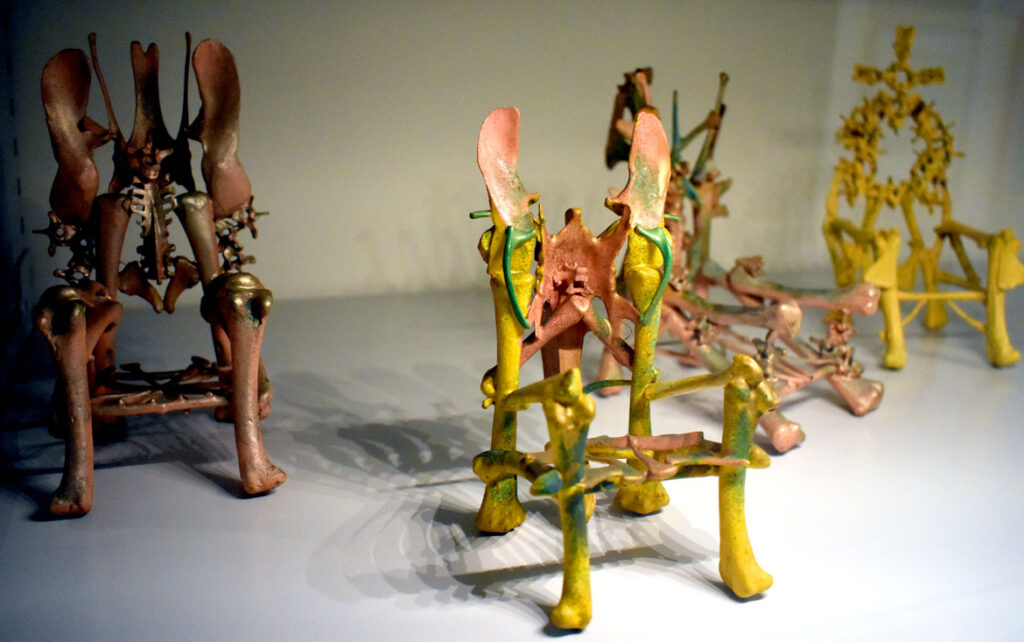
This is the driving philosophy behind the new Art Preserve of the Kohler Arts Center—“the brainchild of Ruth DeYoung Kohler II”—which opened on June 26, 2021, in Sheboygan, as a satellite campus to the Arts Center.
One of the first exhibits you encounter on the first floor is a facade of a house inspired by the Von Bruenchenhein home. Those Von Bruenchenhein concrete heads lean against the exterior with their stern, ancient-seeming expressions. Enter and you find recreated tableaus of his basement and attic, as well as selections of his chicken bone towers and thrones, photos of Marie, ceramic crowns and vessels, and visionary paintings.
“Kohler recognized that the full power of Von Bruenchenhein’s expression could be realized only if the work stayed together. The Arts Center acquired more than 6,000 pieces of art—its first acquisition—from Marie,” explains a sign at the Art Preserve. In 2019, the Center acquired 8,300 additional objects from the artist’s estate. “A vast majority of his output is reunited here in a space mirroring the diminutive size of the original Von Bruenchenhein home.”
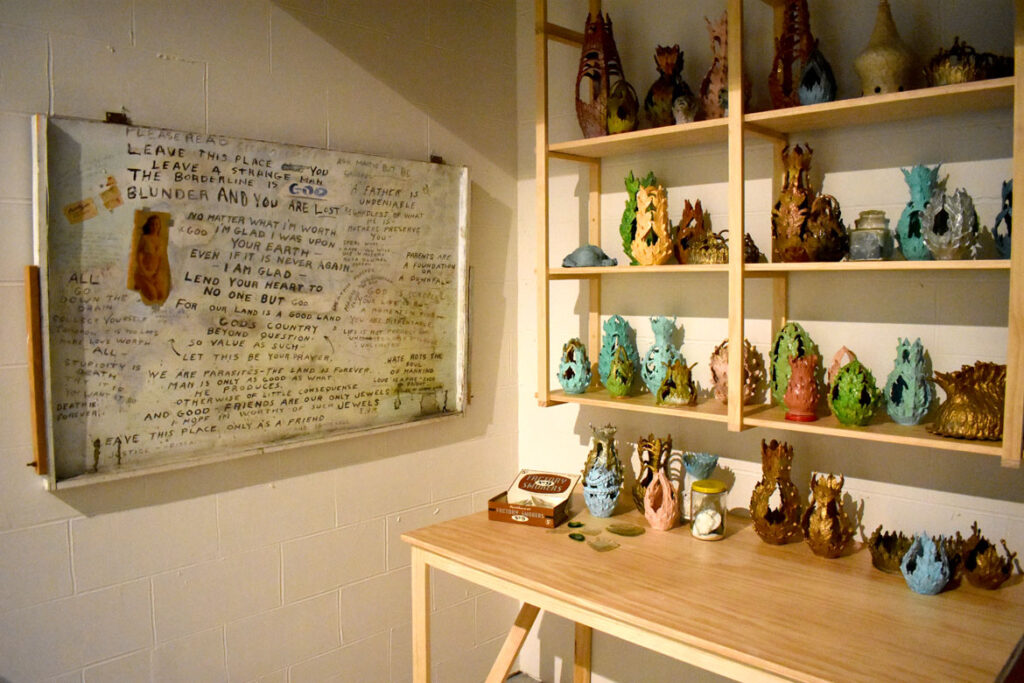
This is what makes the new Art Preserve unique—and astonishing. The museum collects “significant numbers of individual interrelated objects that make clear the artists’ visions for their environments,” Kohler wrote in the catalogue for the Kohler Arts Center’s landmark 2007 exhibition “Sublime Spaces & Visionary Worlds.” (The lead author of the book was Leslie Umberger, then the Arts Center’s senior curator and one of the many experts in the field who contributed to the development of the Kohler museums.)
In concert with the Kohler Foundation, the Center would often buy an artist’s space and everything in it; restore the site and hand it off to local organization for ongoing management; and hold onto some artworks for its collection. Through this work, the Arts Center assembled “the world’s largest collection” of “artist-built environments,” the museum says.
”A painter like Rembrandt was making individual canvases and didn’t necessarily see them as a whole,” Kohler told The New York Times in 2009. “These artists really do. Their vision is bigger than a single piece.”
The Art Preserve displays examples of environments by more than 30 artists—including Nek Chand of India, Eddie Owens Martin (St. EOM) of Georgia, Mary Nohl of Wisconsin, Dr. Charles Smith of Illinois and Louisana, Lenore Tawney of New York, Ray Yoshida of Chicago. It showcases all those individual pieces in immersive tableaus (tidied up a bit, as curators are wont to do) that provoke the feelings of astonishment you get when making pilgrimages to these sites out in the world.
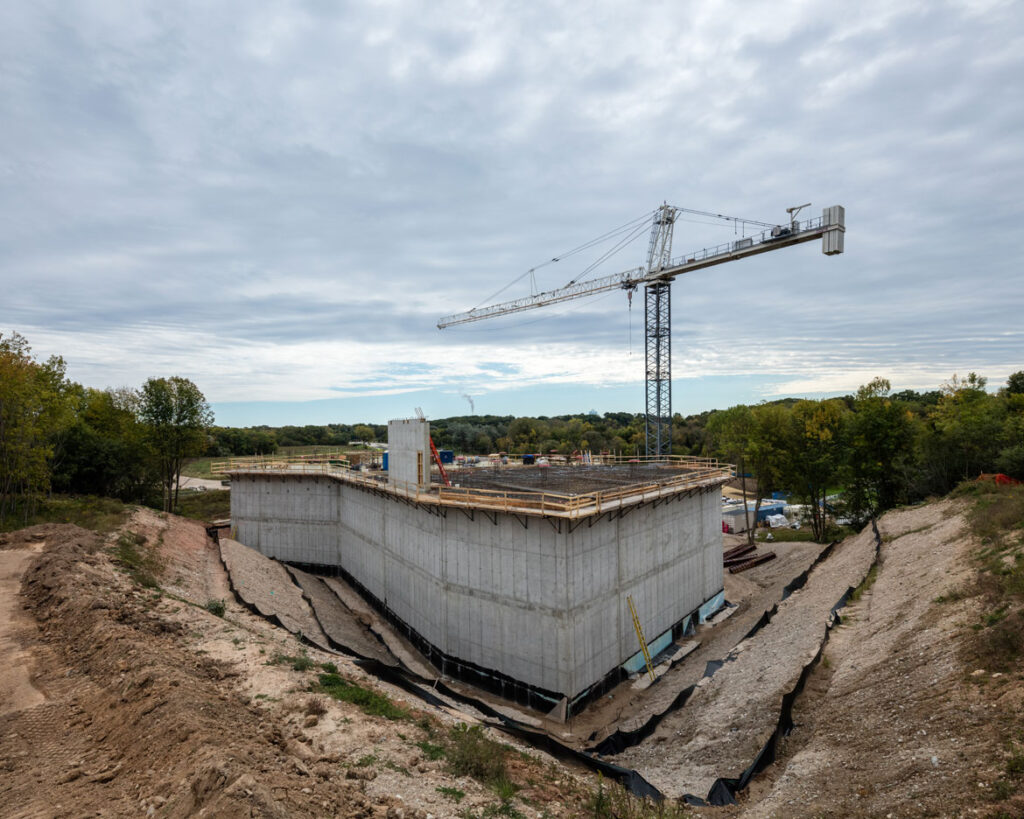
From ‘Lost Library’ To ‘Healing Machine’
The Kohler museums are focused on people moved to remake their world. “Artist-built environments” generally refers to the homes or yards (or both) that visionary or folk artists have transformed into wonderlands. The Art Preserve finally, in a long-term way, brings the Kohler Art Center’s collection of art environments out of storage.
The new $40 million, 56,000-square-foot Art Preserve exhibits and offers “visible storage” for more than 25,000 works. Tall timbers of Wisconsin pine and balsam fir serve as an abstracted forest that you walk through to enter the concrete building—and that screens the gallery windows. Designed by architect Michael Moore of the Denver firm Tres Birds, the building sits partly buried in a rise of a hillside on 38 acres of former farmland on the city’s west side, three miles from the Kohler Arts Center in downtown Sheboygan, which itself is about an hour’s drive north of Milwaukee.
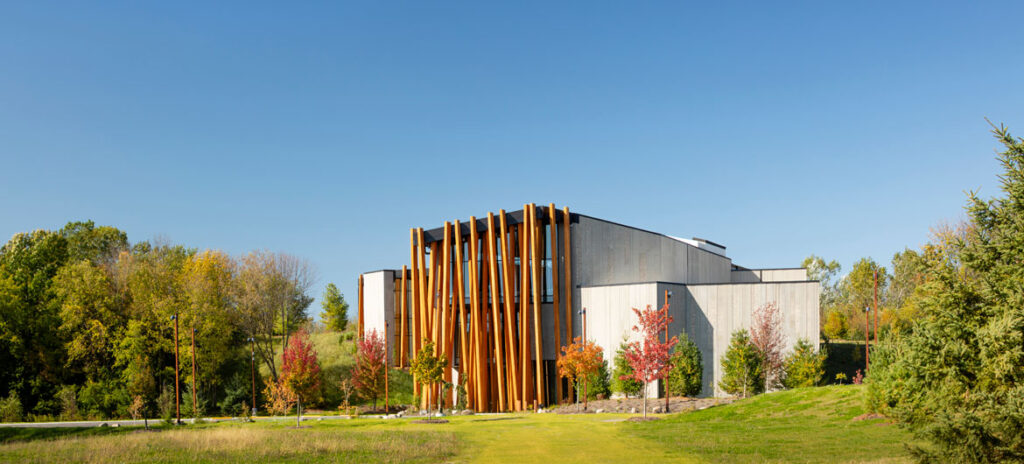
On the lawn out front, one of the late North Carolina artist Vollis Simpson’s (1919-2013) monumental whirligigs spins in the wind. Inside, a wide, open stairway rises through the museum’s three floors. The design is spare—mostly wide-open expanses of gray concrete that successfully recede into the background of the colorful artworks while providing large, flexible spaces for display.
You can step up the porch and walk into a partial recreation of the “Beautiful Holy Jewel Home” that Loy Bowlin (1909-1995)—who styled himself as ”The Original Rhinestone Cowboy”—decorated with glitter-bedazzled construction paper panels in McComb, Mississippi.
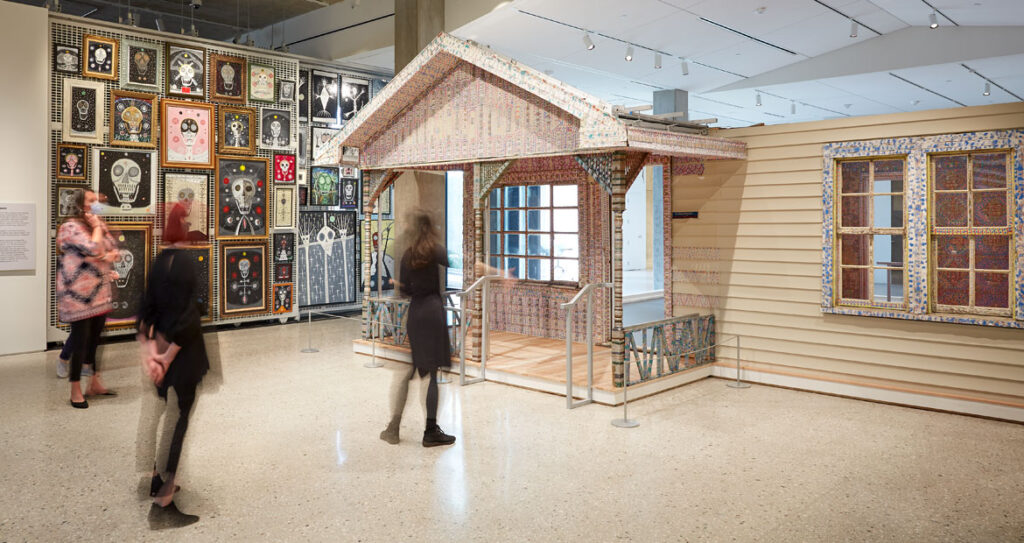
Or you can sit on a couch amidst an evocation of Stella Waitzkin’s (1920-2003) “The Lost Library,” from her tony living room in apartment in New York’s Chelsea Hotel. Floor-to-ceiling shelves are filled with books and birds and faces hauntingly cast in resin—as if mummified.
Peek under a stairway and you discover hundreds of driftwood and concrete figures depicting the Biblical Exodus that Annie Hooper (1897-1986) created in the sunroom of her home in Stumpy Point, North Carolina.
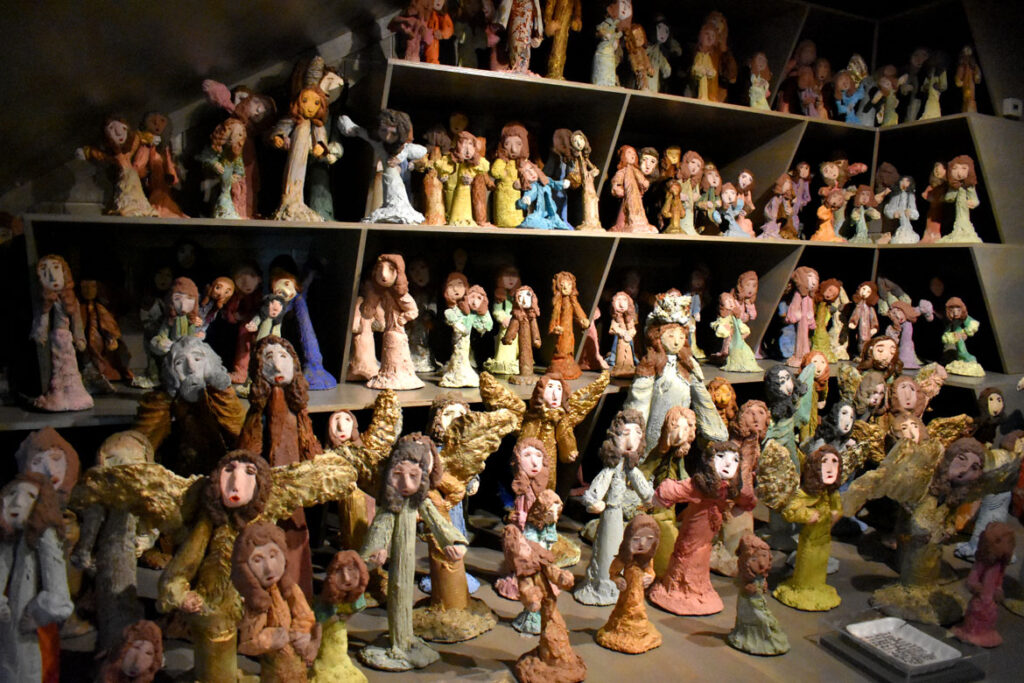
A group of galleries evoke the Chicago apartment of artist Ray Yoshida (1930-2009), who taught at the School of the Art Institute of Chicago for more than four decades. Visionary paintings by Chicago Imagist friends Roger Brown, Karl Wirsum and Jim Nutt hang amidst “outsider” art by Lee Godie and Martin Rameriz as well as folk art masks, dolls, ex voto religious paintings, model churches and barber shop signs.
In the dim cabin-like gallery housing the “Healing Machine” by Emery Blagdon (1907-1986), you find contraptions resembling batteries or chandeliers or UFOs that dangle from the ceiling and shimmer out of the darkness.The space evokes a shed in the Sandhills region of Nebraska that Blagdon filled with objects he assembled from wire, masking tape, sheet metal, aluminum foil, minerals, mechanical odds and ends, Christmas lights, and “elements” he purchased from the local pharmacy. It was all designed to channel the earth’s electricity for healing.
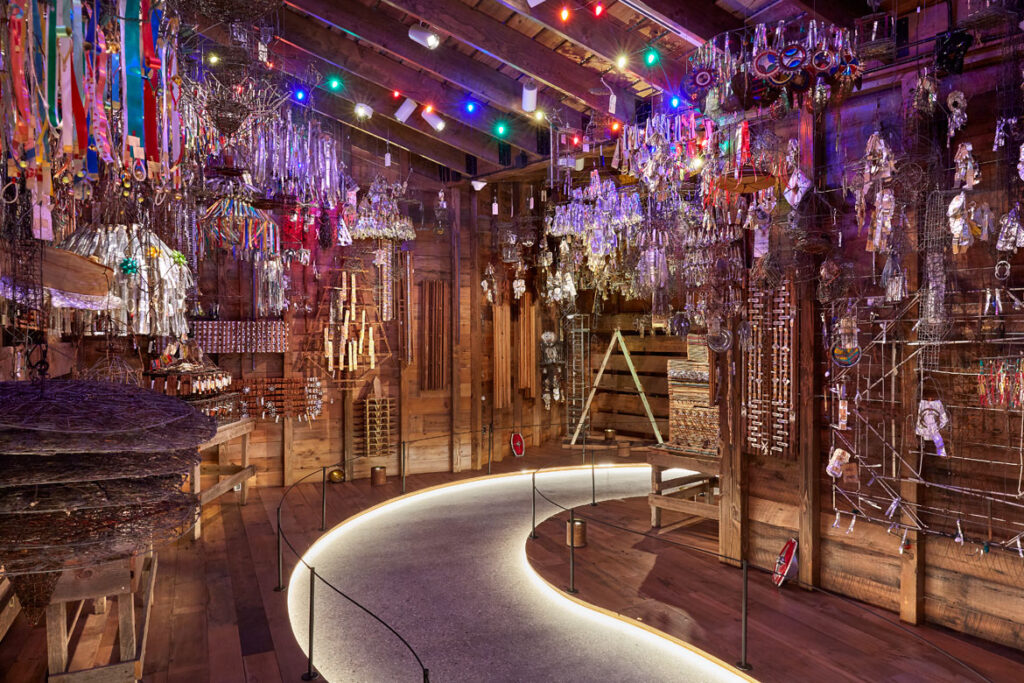
Uniquely Positioned
Ruth DeYoung Kohler II was uniquely positioned to help preserve the life’s work of Von Bruenchenhein and these other artists.
Kohler was a major shareholder of the family’s privately-held Kohler Company—along with her brother, Herbert Kohler Jr., the company’s chairman and chief executive officer. Founded by their grandfather, John Michael Kohler, in 1873, the company manufactures toilets, showers and plumbing.
Kohler also served on the board of the family’s Kohler Foundation from 1969 to 2019 and as the foundation’s president from 1999 to 2006.
Kohler’s father, Herbert Kohler Sr., became president of Kohler Company in 1937 and chairman in 1940. He ran the company “during the longest major strike in the history of United States labor,” from 1954 to ’60, which the company lost and was fined for unfair labor practices by The National Labor Relations Board, The New York Times reported when he died. The National Association of Manufacturers named him “Man of the Year” in 1958 for “his leadership in the field of industrial relations, and his insights into preserving the rights of individual citizens,” among other things. Kohler’s mother, Ruth DeYoung Kohler, was a daughter of the chief justice of the Illinois Supreme Court, who became a Chicago Tribune reporter and editor. She died in 1954. Ruth Kohler II’s uncle and cousin served as governor of the state of Wisconsin.
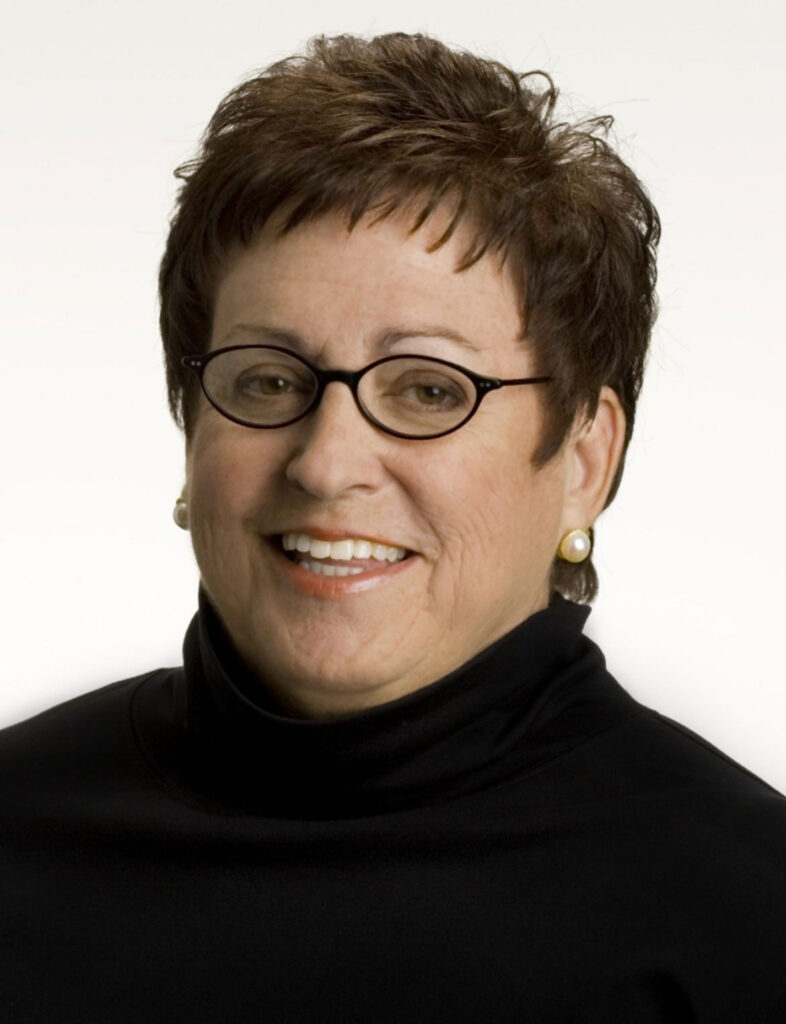
Ruth DeYoung Kohler II trained as an artist—and taught for a time at University of Alberta in Calgary, where she founded its printmaking program. She was living as an artist in Spain in 1967, when news that her father was sick brought her home to Wisconsin.
“A day later I was asked to become involved in the John Michael Kohler Arts Center, which, ironically, had been founded just a few months earlier,” Kohler wrote in “Sublime Spaces & Visionary Worlds.”
The Sheboygan Arts Foundation had just opened the Arts Center in 1967 as an independent nonprofit—and named it after Kohler’s grandfather in thanks for the family donating his 19th-century, Gilded Age Italianate mansion to serve as the museum’s home.
Kohler volunteered at the center, then became assistant director in 1968 (her father died that July at age 76), before being appointed the center’s third director in 1972. The museum was focused on temporary exhibitions of American craft. It’s motto: “All the arts for all the people.” With financial help from the Kohler Foundation, she expanded the Art Center’s purview to “self-taught artists,” creators generally operating outside the fine art world.
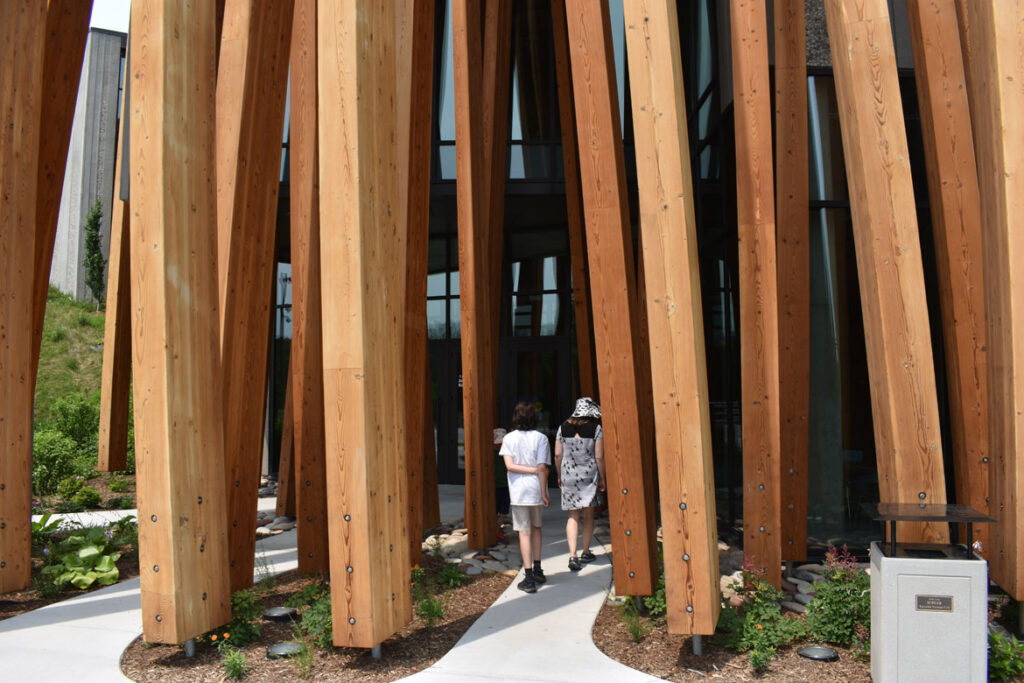
Inspiration and Preservation
A stout man and deer constructed from concrete and broken bottles by Fred Smith (1886-1976) stand just behind the front desk on the Art Preserve’s first floor.
Early in Ruth Kohler’s time working at the Arts Center, a board member led her to Smith’s tavern in Phillips, Wisconsin. The retired lumberjack had made his bar a local landmark by surrounding the building with more than 200 larger-than-life concrete sculptures of Paul Bunyan, Sacagawea, Budweiser’s Clydesdale Team, Ben-Hur driving a chariot, a moose, a woman milking a cow.
“The first few minutes with Fred,” Kohler wrote in “Sublime Spaces,” “transformed the way I thought about art.”
After Kohler joined the fledgling Wisconsin Arts Board in 1973, she brought the state agency together with the Kohler Foundation and the National Endowment of the Arts to successfully preserve Smith’s creation in place.

Driving across Wisconsin’s rolling farmland, you can find a wealth of visionary sites: Paul and Matilda Weneger’s grotto of concrete and broken glass mosaic shrines and animals; Nick Engelbert’s “Grandview,” his mosaic house and concrete sculptures of a lion, an eagle and Snow White circled by dancing dwarves; Tom “Dr. Evermor” Every’s “Forevertron,” an industrial-scaled metal construction that looks like a Jules Verne rocket and devices for communicating with other worlds.
This Badger State richness is fueled by a combination of inspiration and preservation. The inspiration was the landmark concrete and mosaic grottos created by Roman Catholic priests Paul Matthias Dobberstein at West Bend, in north-central Iowa, from 1912 to his death in 1954 (others subsequently continued the work) and by Matthias Wernius at Dickeyville, in the southwest corner of Wisconsin, from 1925 to ’30, The sites can bring to mind dazzling reefs of stone and coral and jewels.
The priests’ constructions attracted visitors from across the region—and inspired a number of these visitors to create their own wonderlands, and often build them from concrete, which survived out in the Wisconsin weather longer than wood. Still, “most of these works and sites have been lost to time, deemed not remarkable or rarefied enough to save,” a sign at the Art Preserve explains. But as artists were dying in the late 20th century and their creations required restoration and saving, Ruth Kohler and the Kohler Foundation arrived to help.
“I was certain that an informal partnership [between the foundation and the Arts Center] would prove to be fruitful in preserving the sites,” Kohler wrote in “Sublime Spaces.” Early on, she “generally took the lead in planning the projects” together with guest conservators.
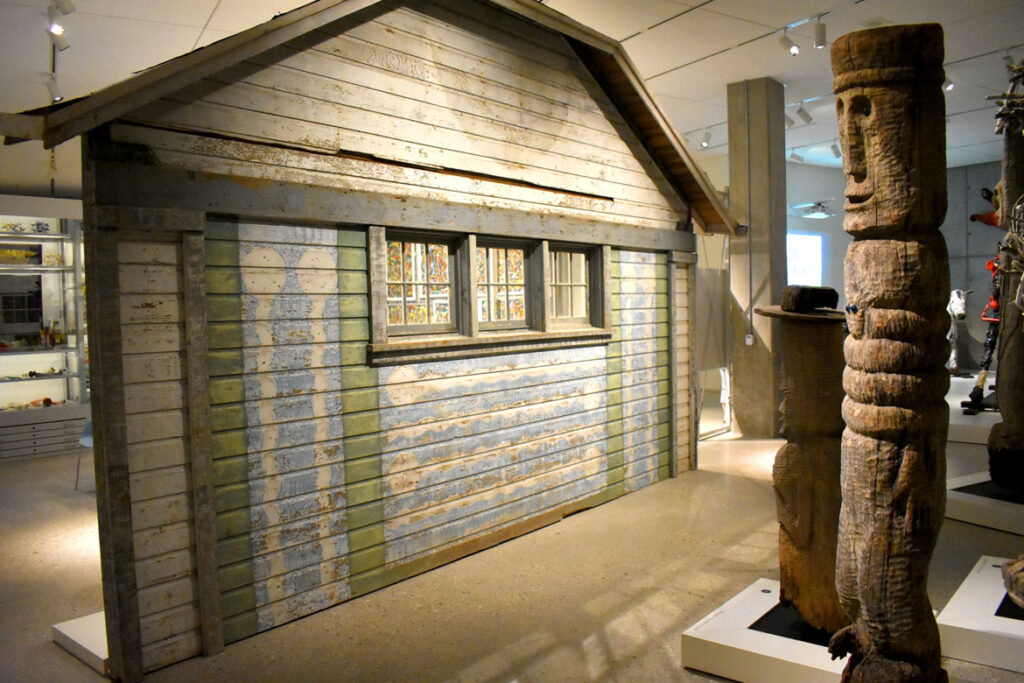
The Kohler Arts Center had not been collecting artworks—focusing on temporary exhibitions. But the acquisition and preservation of Von Bruenchenhein’s work in the 1980s changed that. With Ruth Kohler’s decision, the Arts Center began amassing an archive of artist-built environments—to preserve the immersive vision of these artists even when the original site couldn’t be saved. (Kohler wrote that Von Bruenchenhein’s house was “beyond restoration.”)
Soon Ruth Kohler’s scope grew beyond the Wisconsin sites showcased on the Art Preserve’s first floor. The foundation and the Arts Center funded the preservation of art environments across the country—Mary Nohl’s cottage surrounded by her monumental concrete creatures on the shore of Lake Michigan in suburban Milwaukee; Ben Hartman’s Historical Rock Garden, a cement and stone model castle surrounded by historical and religious dioramas in his yard in Springfield, Ohio; Eddie Owens Martin’s (St. EOM) visionary compound Pasaquam in rural Georgia; Bernard “Blackie” Langlais’s folksy wooden animals and figures on his property in Cushing, Maine.
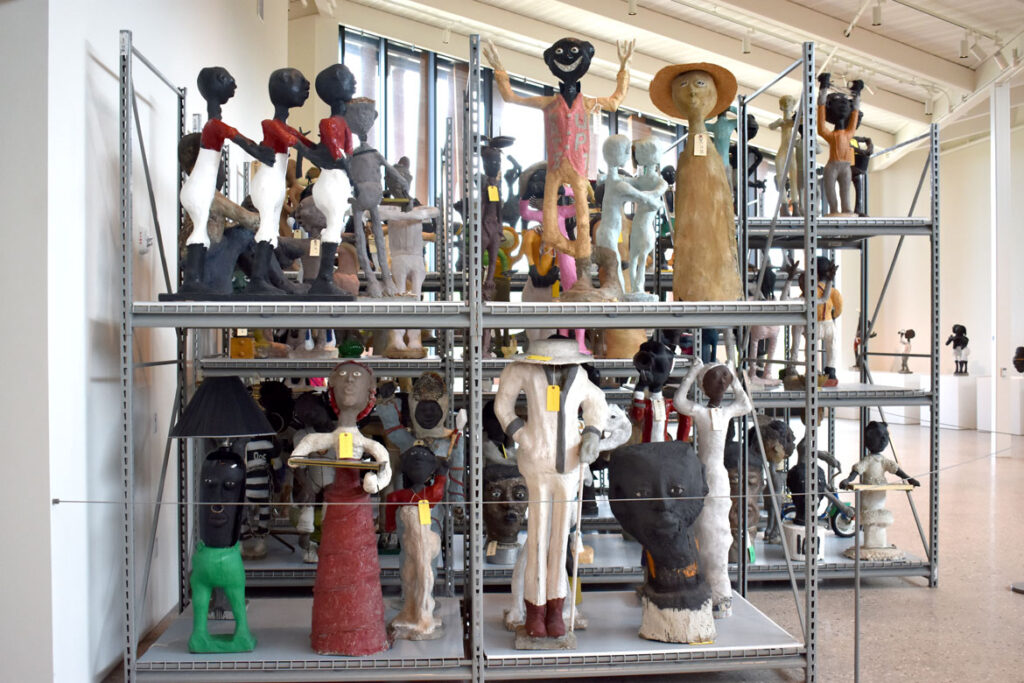
Detours
The Art Preserve offers few photos or videos or labels to explain the original context of the artworks. In some ways, this approach can evoke the experience of visiting an artist environment out in the world. Maybe you’ve read about it a bit on the web, but mainly you arrive having to find your way and discover what it’s about on your own (or with a conversation with the artists, if you’re lucky enough to meet them). This minimal style coincidentally also corresponds with a trend among museum curators to reduce signs.
The museum’s “visible storage” method means displays often evoke behind-the-scenes museum storage—with paintings hung on wire racks, artworks stored in locked flat files, and sculptures and furnishings sometimes stacked on basic metal storage shelving.
For example, the Black figures sculpted by Dr. Charles Smith (born 1940) are packed on storage racks and some pedestals on the top floor. They’re from his “African-American Heritage Museum + Black Veterans’ Archive,” created at a small house in Aurora, Illinois, through 2001 before he moved to Hammond, Louisiana, to care for his ailing mother. “The [Aurora] site was purchased by the foundation and most of it was carefully dismantled at the request of the artist,” Kohler wrote in “Sublime Spaces.” The collection of Black figures feels very much like storage, rather than Smith’s original tableaus marked by signs (absent here) reading: “Slavery: African Holocaust” and “The Middle Passage Millions Died” and “In Memorial To The Over 7,000 Afro-Americans Who Died In Vietnam.”

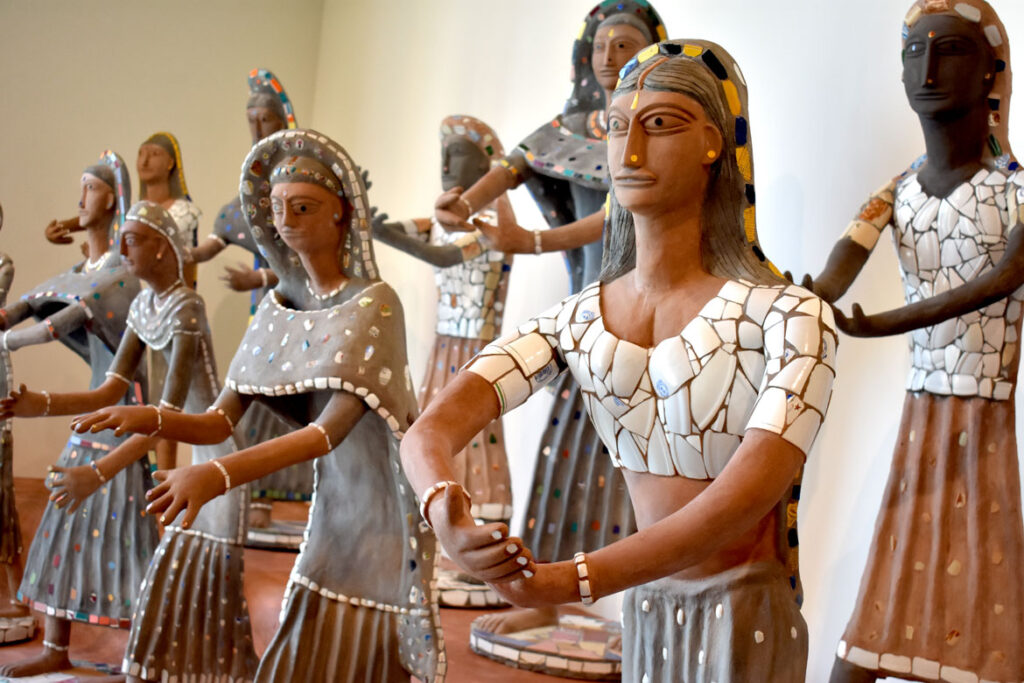
But on the same floor, a vast display of concrete and fabric people and animals by Indian artist Nek Chand (1924-2015) is transporting. In 1958, while he was working as a road inspector, he began creating what he originally called “The Kingdom of Gods and Goddesses” and later became known as the “Rock Garden of Chandigarh.” He imagined it as an expansive gathering of “immortal beings” and temples and villages and labyrinthine paths and waterfalls, illegally sculpted on unused city land at the edge of Chandigarh, the site of India’s new capital after India’s 1947 partition and the creation of Pakistan. He began building it with curious local boulders and wreckage from several villages razed to clear land for the new capital. When government officials found out in 1972, they moved to demolish it, but community protests held back the bulldozers. Eventually, the government was convinced to give Chand funding and crews to continue creating.
Ruth Kohler invited Chand to create a small garden at the Kohler Arts Center. Instead, after the Chandigarh garden was vandalized during a 1996 visit to the United States, Chand decided to donate more than a hundred pieces to the Arts Center in 1999, to preserve a representative selection of his artworks even if his “Garden” was destroyed.
The sculptures fill the gallery like a parade or a dance number featuring a cast of thousands—kings, queens, ascetics, Hindu saints, soldiers, water-carriers, dancers, birds, a big cat, donkeys, oxen. A group of women appear to be dancing—but actually are intended to be drawing water from a well. The sculptures are shaped from concrete, sometimes toned gray or red-brown with chalk or brick dust or pigments, and dressed in mosaics of rocks or shards of broken ceramics or bits of wire. Some birds have skin of shimmering blue or emerald broken bottles. Figures with similar poses are often grouped together, the repetition giving the feeling of the multitudes of a whole community. And they all look with blank solemn stares.
The Art Preserve had been scheduled to open in August 2020, but the covid pandemic caused delays. So Ruth Kohler ended up not being able to be there for the debut—she died on Nov. 14, 2020, at age 79. The institution represents the culmination of her vision—an ark preserving these visionary worlds.
“Be open to detours and side roads,” she once said, “often they lead to the richest experiences.”
If this is the kind of coverage of arts, nature, cultures and activisms you appreciate, please support Wonderland by contributing to Wonderland on Patreon. And sign up for our free, (hopefully) weekly newsletter so that you don’t miss any of our reporting. (All content ©Greg Cook 2021 or the respective creators.)
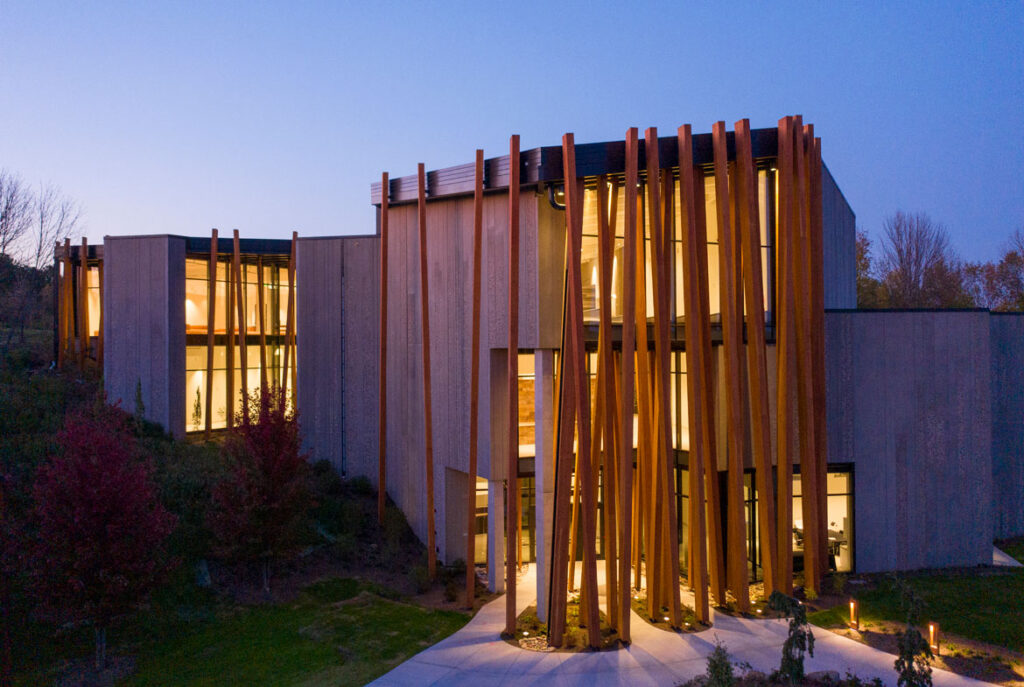
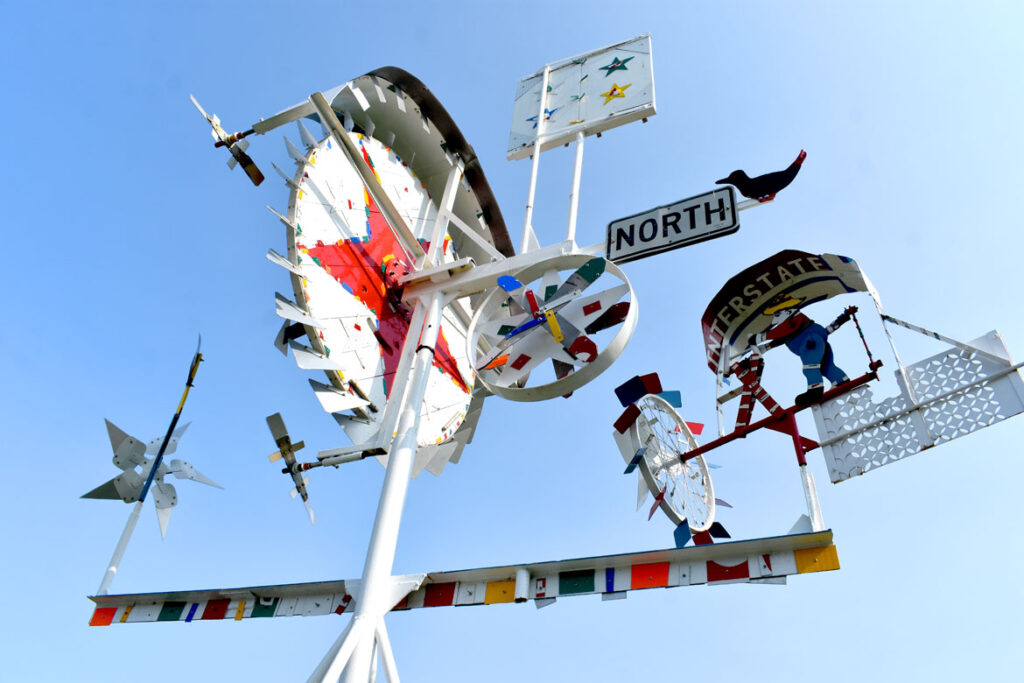
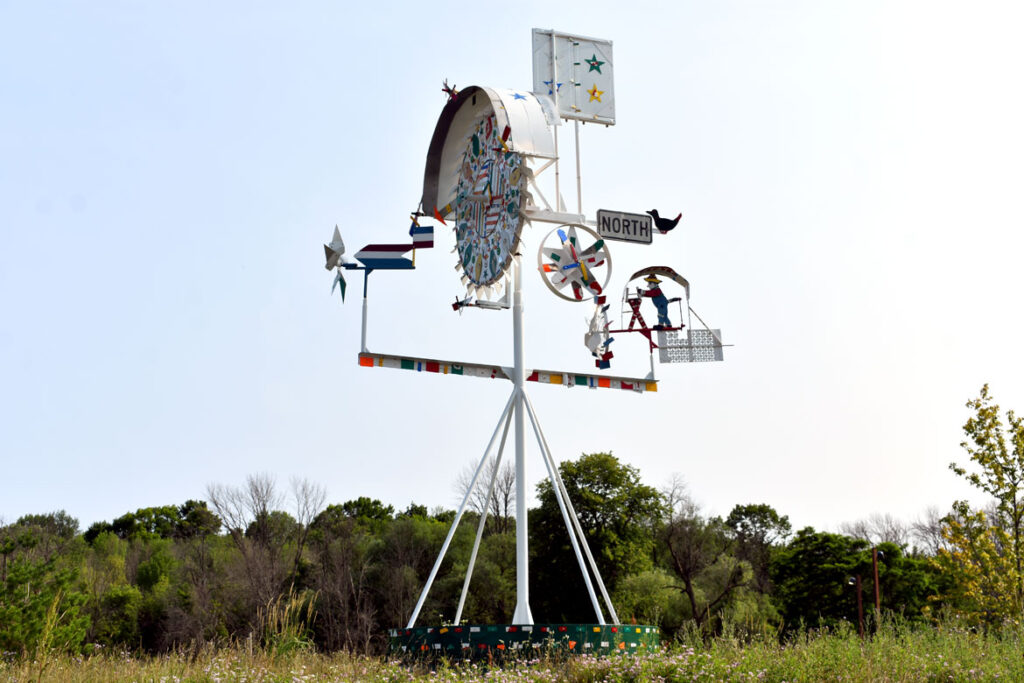
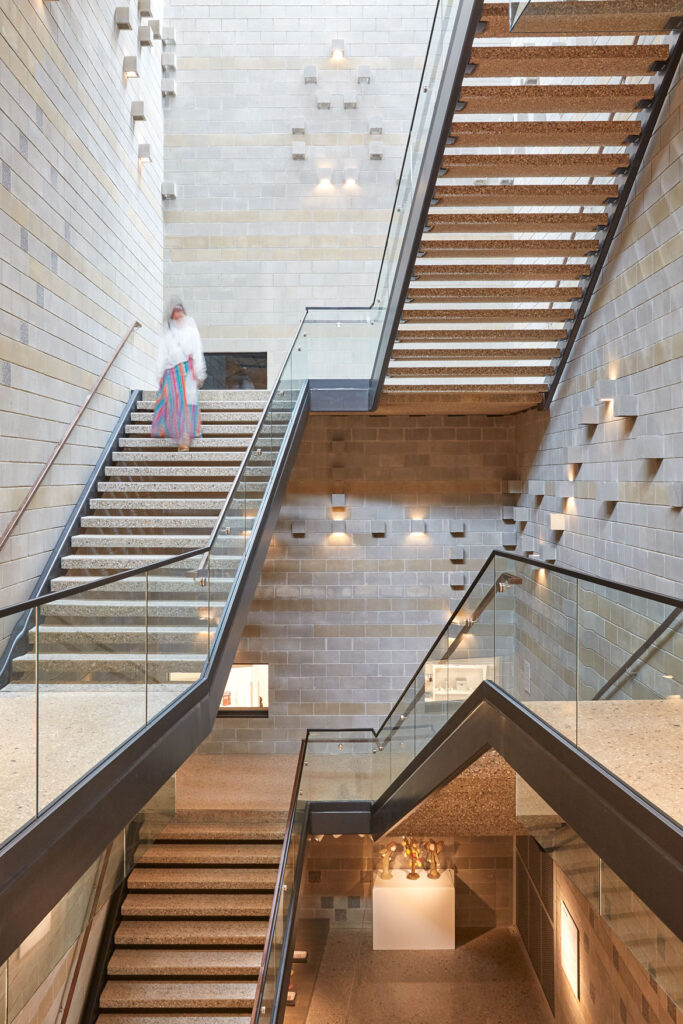
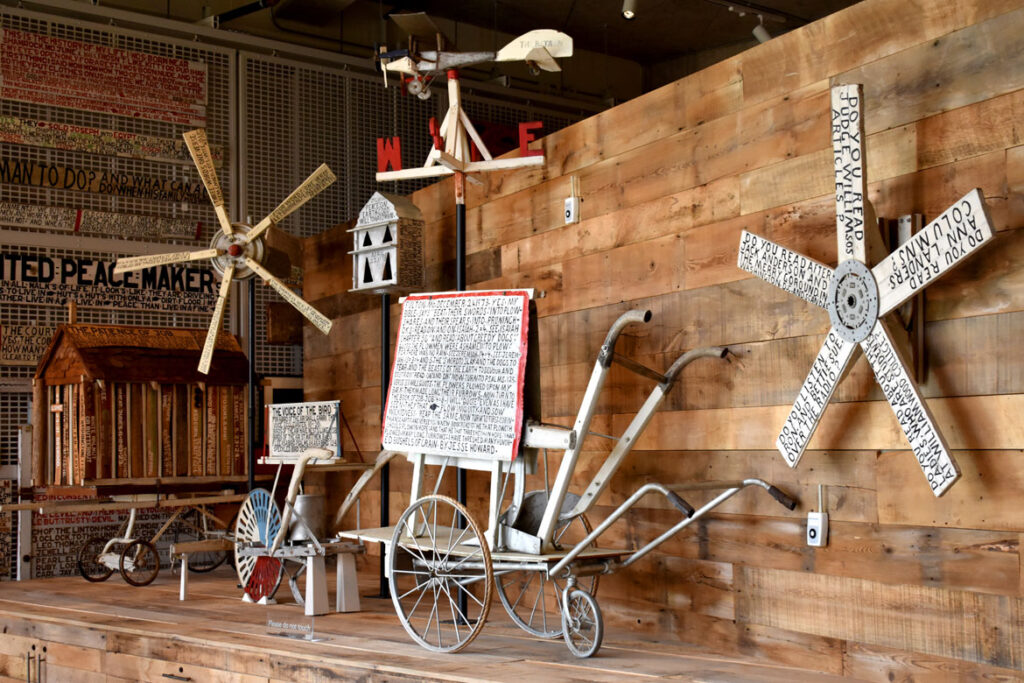
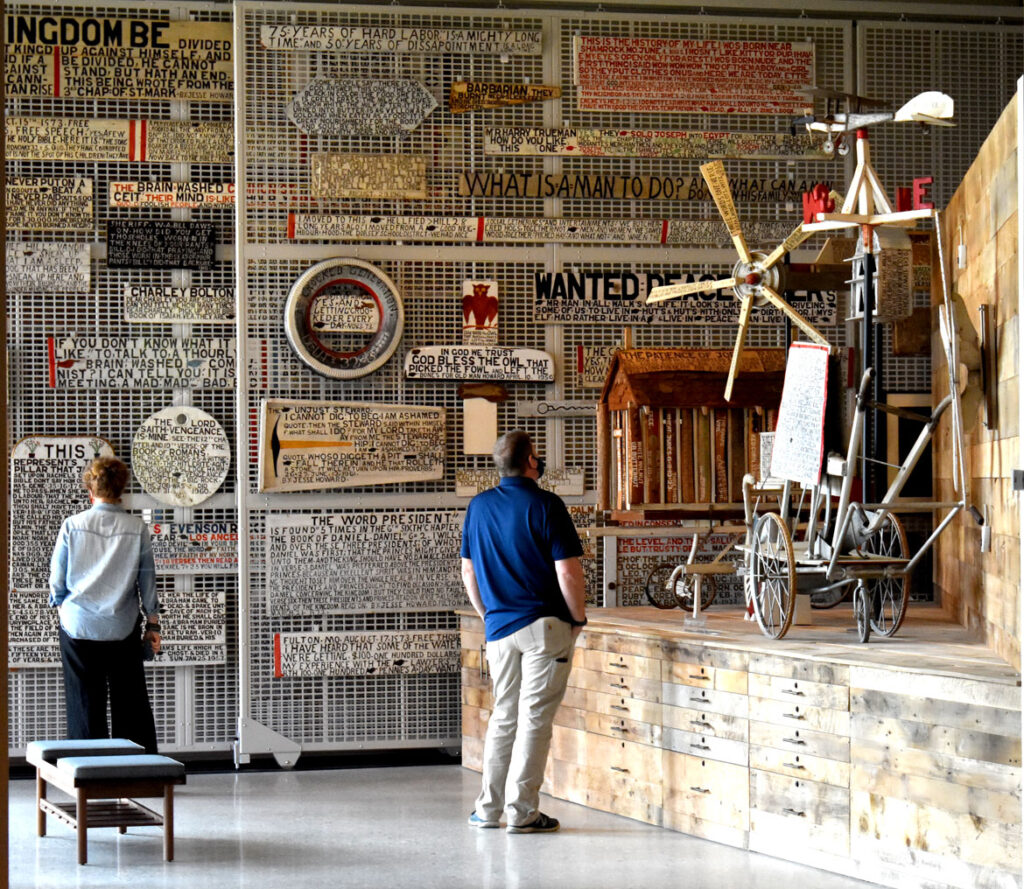
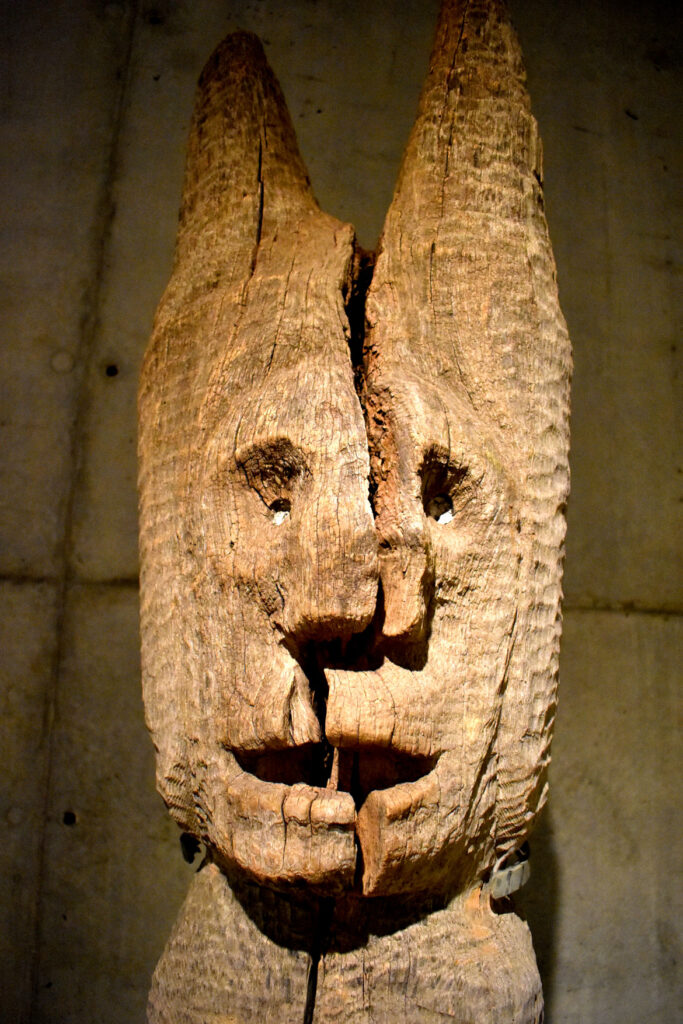
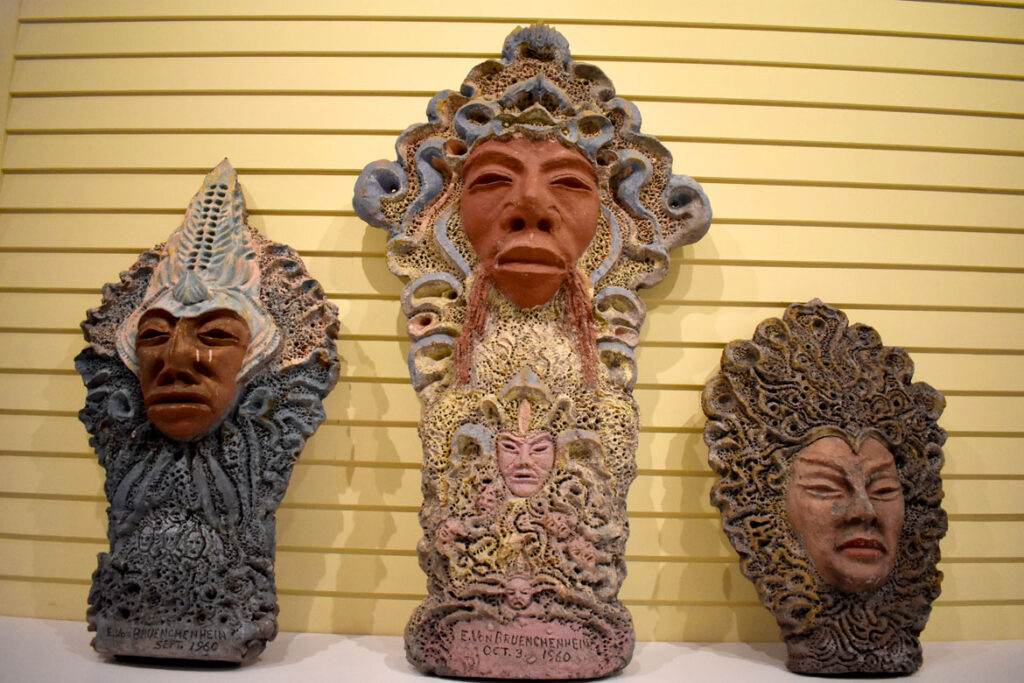

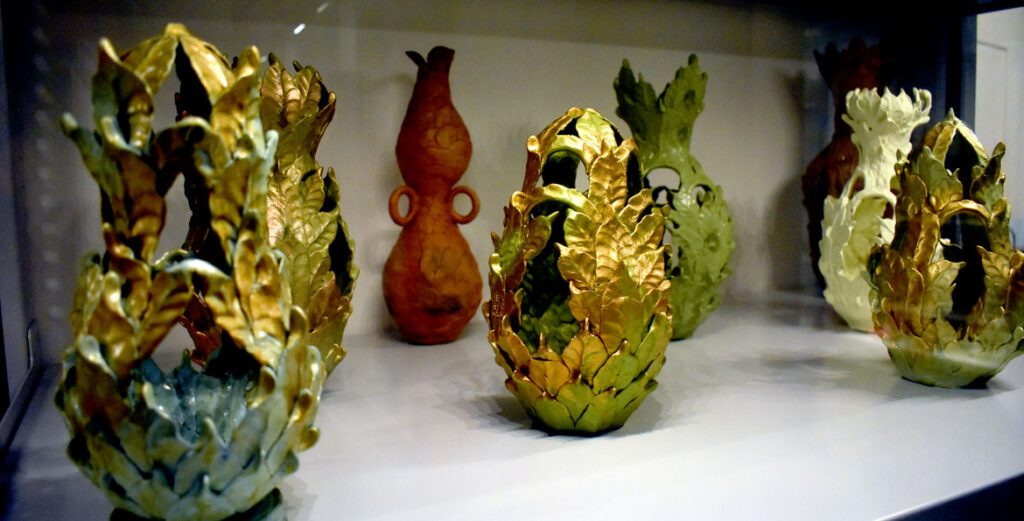
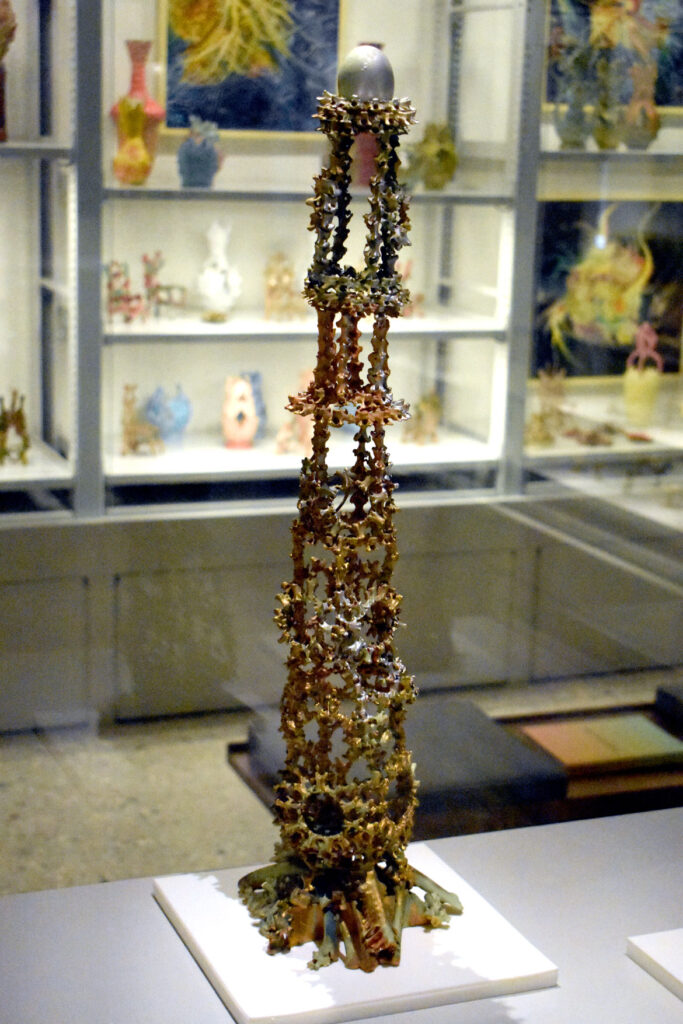


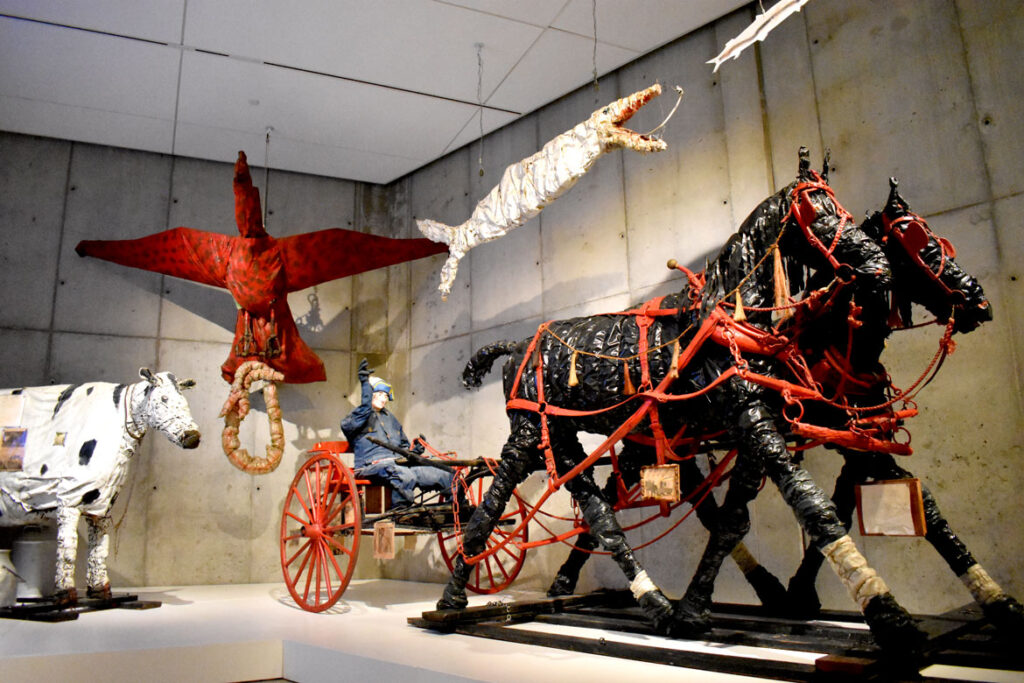
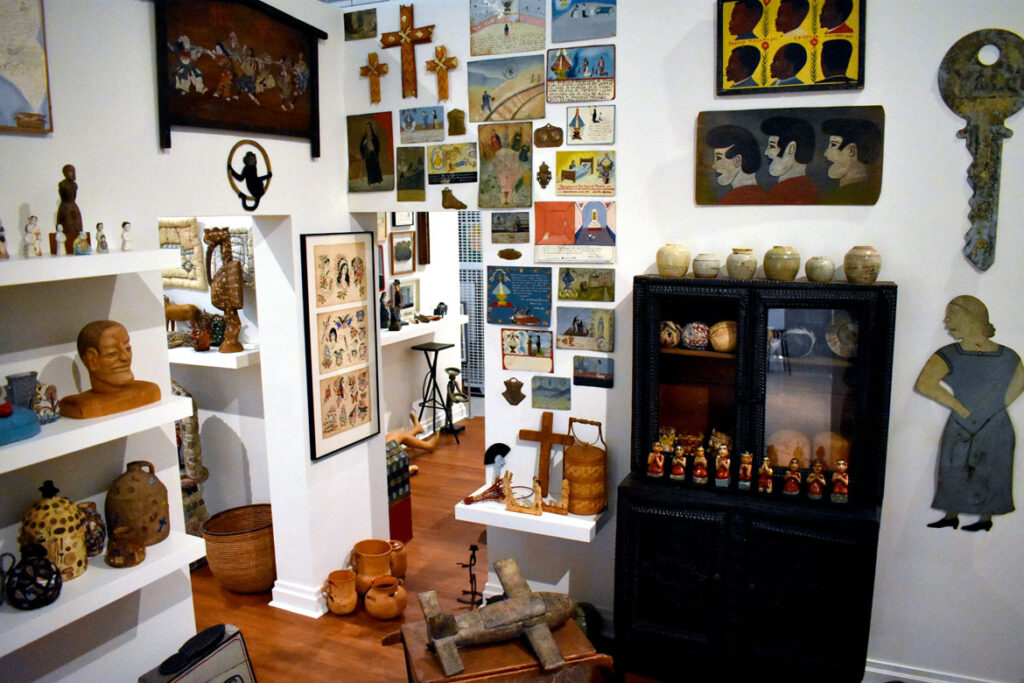
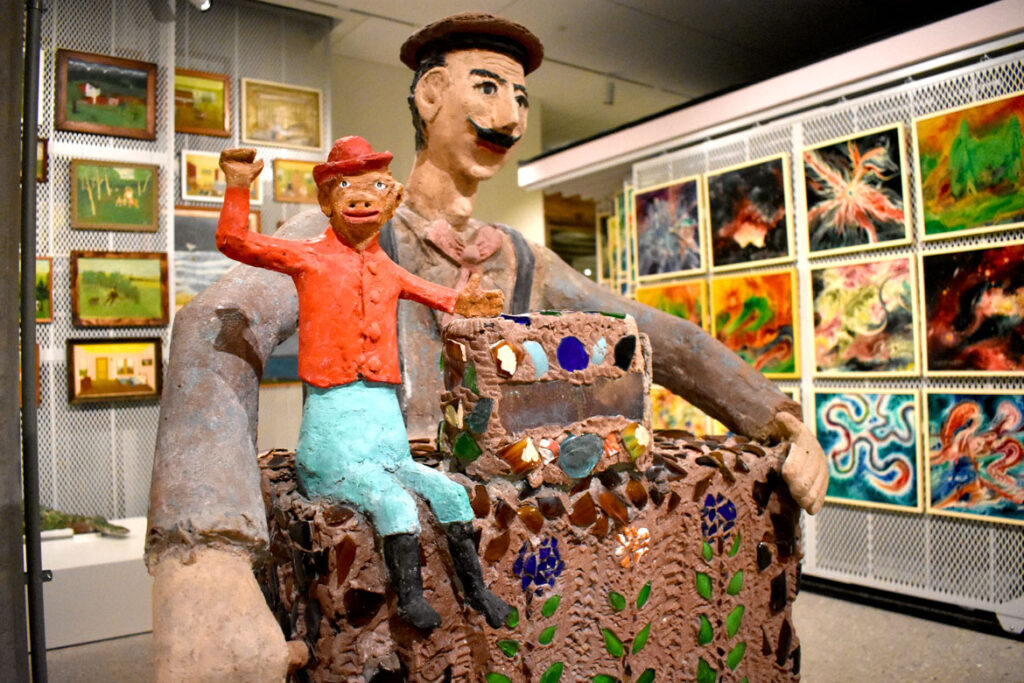
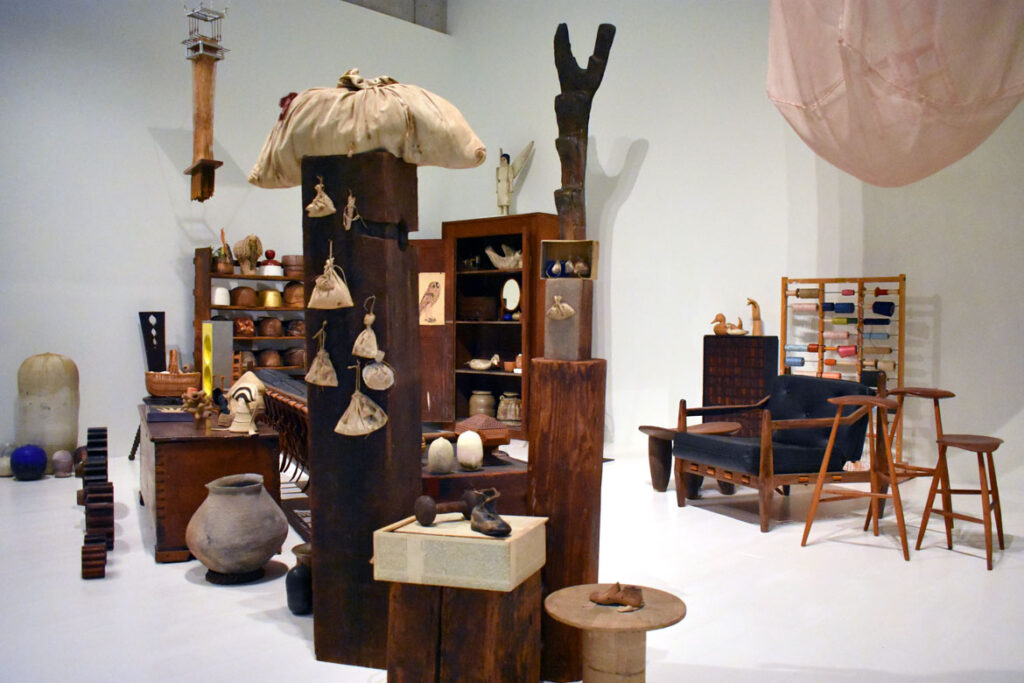
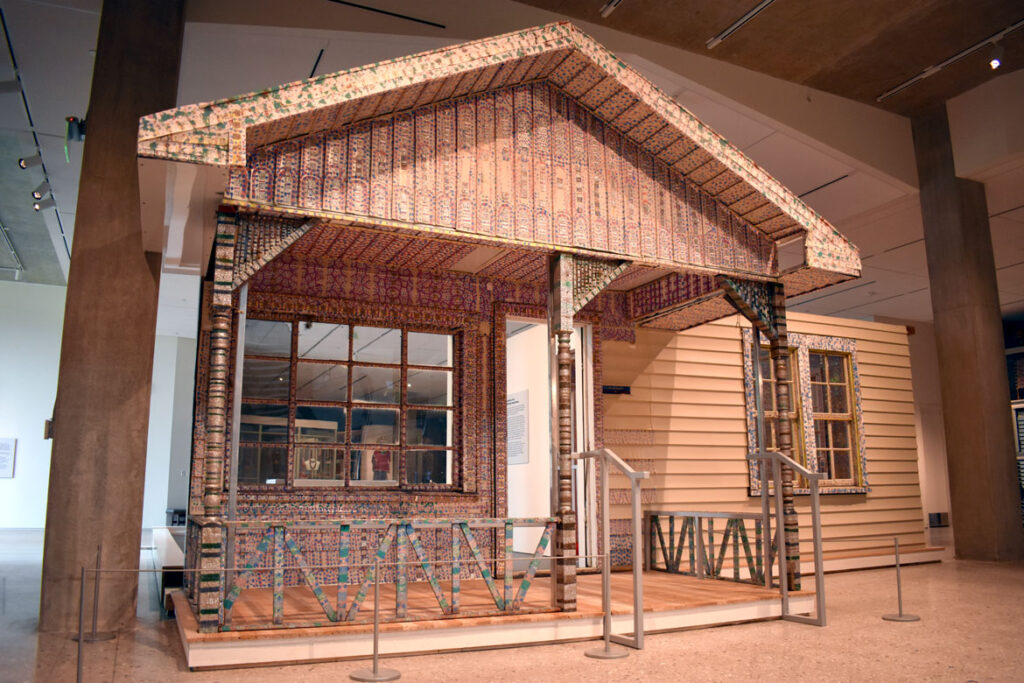
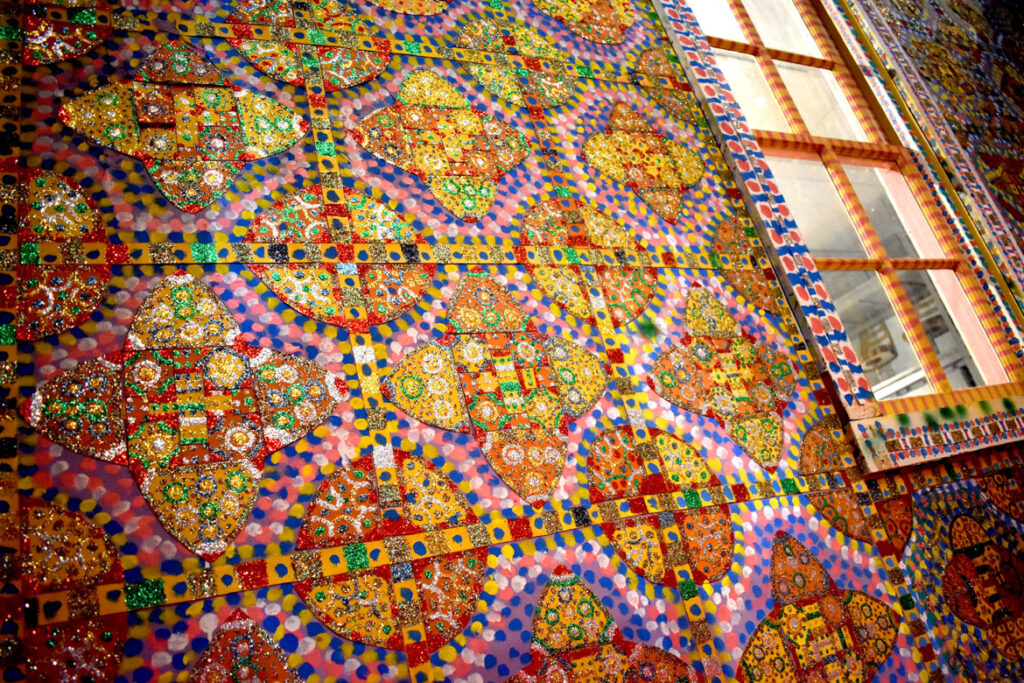

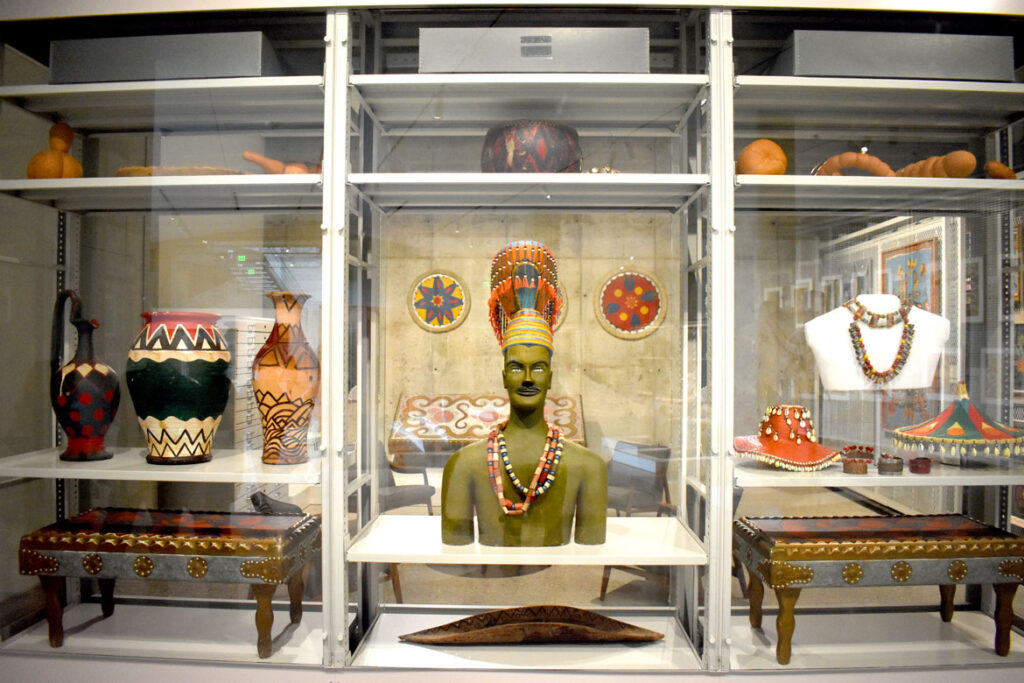
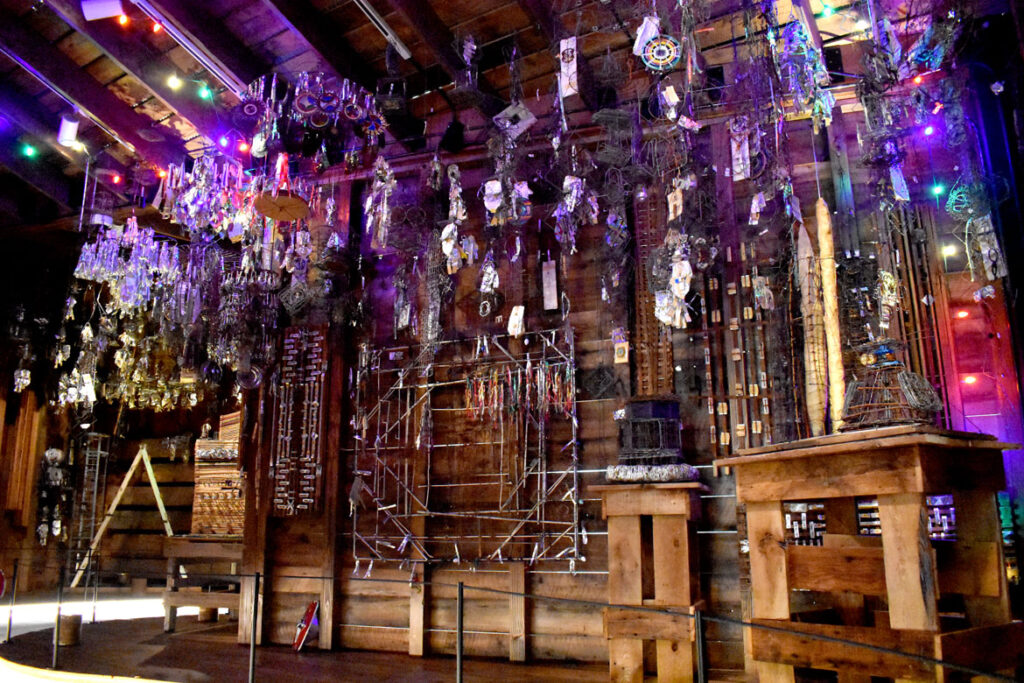

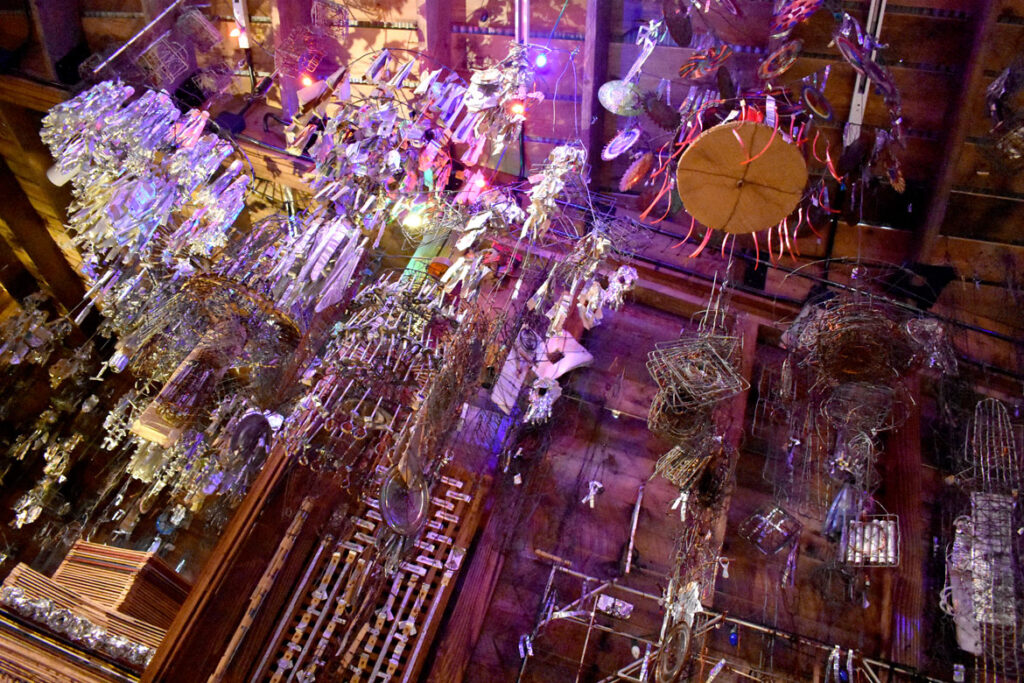

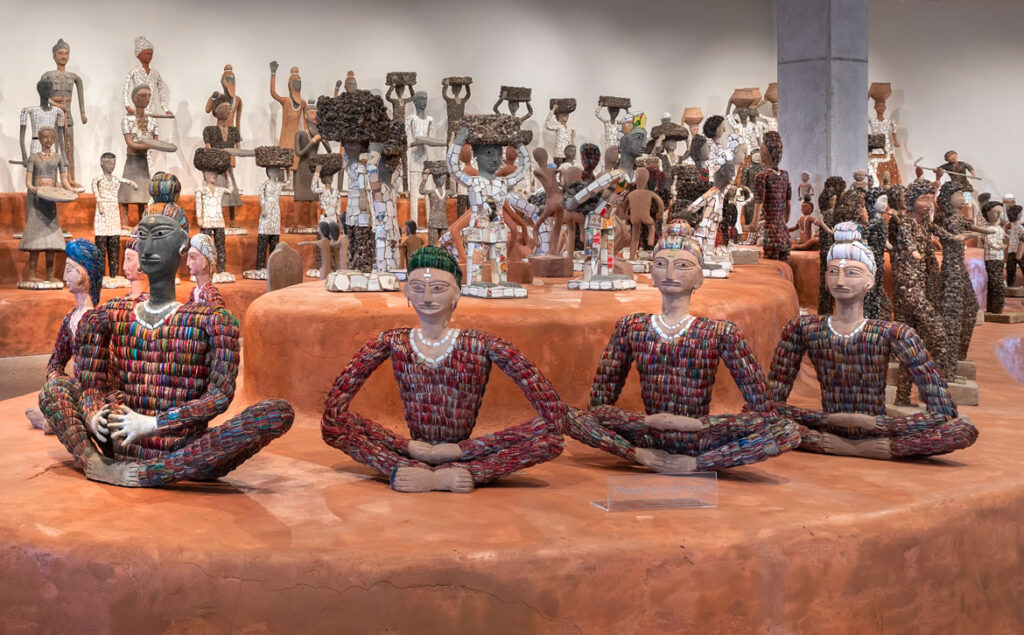

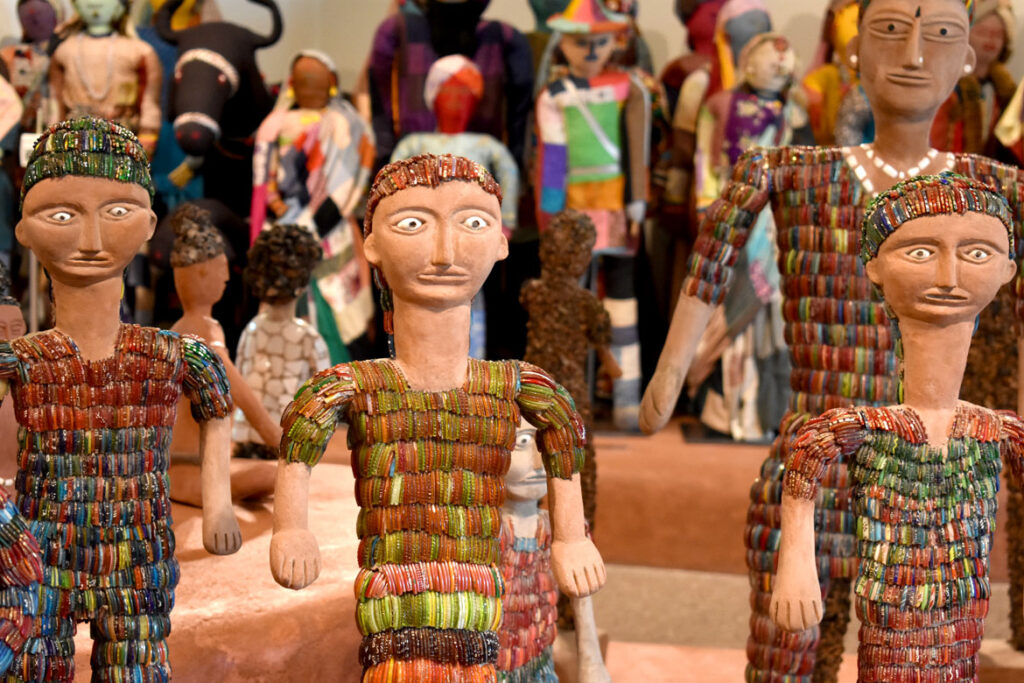
If this is the kind of coverage of arts, nature, cultures and activisms you appreciate, please support Wonderland by contributing to Wonderland on Patreon. And sign up for our free, (hopefully) weekly newsletter so that you don’t miss any of our reporting. (All content ©Greg Cook 2021 or the respective creators.)
